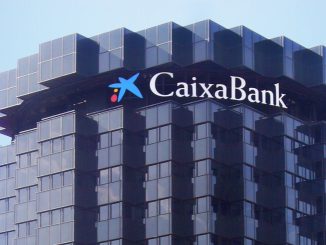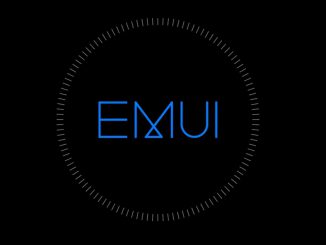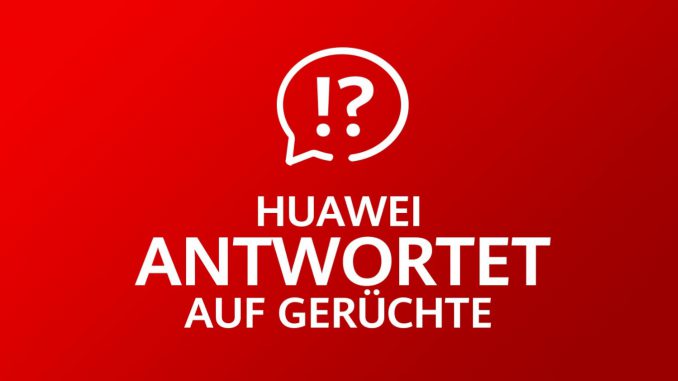
Recently, the Chinese manufacturer has increased its PR efforts by attempting to correct the record on various different matters touching its Consumer division.
Artículo disponible en Español | Article disponible en Français
Huawei’s Consumer Business Group has recently started to increase its PR efforts, by confronting directly rumours and misunderstandings through official channels in various European countries. Until recently, the company would avoid talking about anything in general, usually sticking to official press releases now and then, such as on the launch of a new device or product, or statements given to some media outlets on very specific matters.
Things started to change when Huawei CEO Ren Zhengfei’s daughter, Meng Wanzhou, was arrested in early December 2018 in Canada. Meng Wanzhou, until then Huawei’s chief financial officer (CFO), was arrested on request of the United States, on the grounds of violating US sanctions against Iran. It is around this time that one of Huawei’s Twitter accounts, “Huawei Facts” (@HuaweiFacts) started actively tweeting against the arrest, and, more in general, against the US’s constant attacks on the Chinese company. Around the same time, HuaweiFacts would claim the “lighthouse is waiting [for the return of Meng Wanzhou]”. This slogan was also supposedly used at Huawei’s headquarters in Shenzhen, claiming “The lighthouse is waiting for the early return of the night boat”, with “night boat” being “wanzhou” in Chinese, corresponding to the surname of Zhengfei’s daughter. As per usual, Huawei likes to use deeply symbolic wording, generally rooted in China’s mythology and general culture, which adds to the “charm” of the company. As it can be seen in the following screenshot, HuaweiFacts uses a lighthouse image as header. This detail is also shared with its “HuaweiEUNews” account, as we’ll see a bit further.
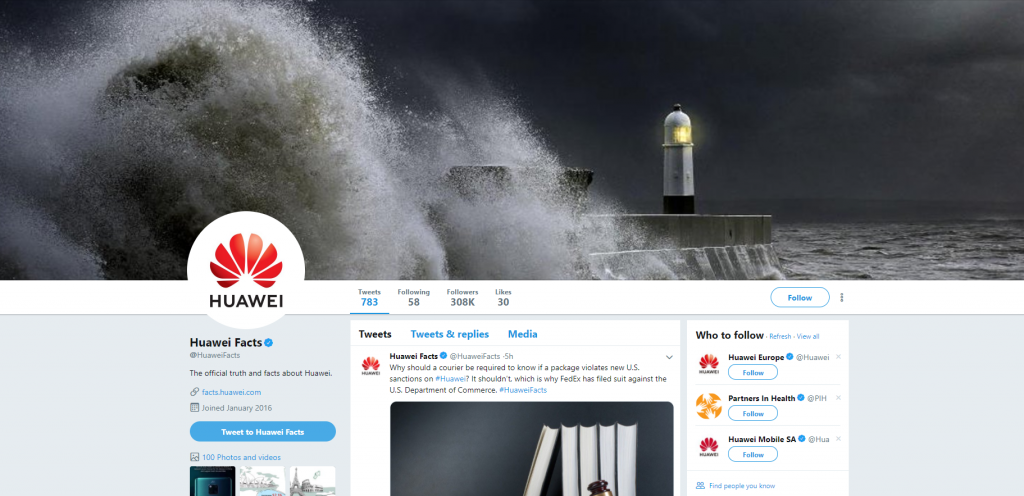
In a similar fashion, Huawei opened a different Twitter account in February of this year, “HuaweiEUNews” (@HuaweiEUNews), working in a similar way to HuaweiFacts, sharing articles from various media outlets talking about the successes of the company in different markets, such as 5G, as well as trying to dispel fears about espionage and bans of Huawei’s telecom infrastructure deployment in our continent. Ironically, we suspect we might have disturbed the plans of the company, as “HuaweiNews.eu” uses the Twitter handle “@HuaweiNewsEU”, which is easier to read and remember than “@HuaweiEUNews”.
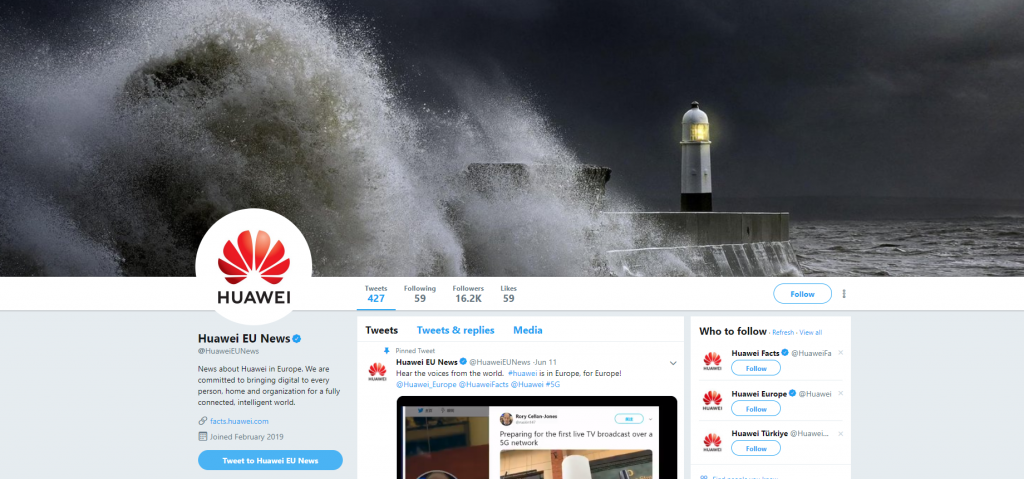
Coming back to the title of this article, Huawei recently launched in Germany a website called “HuaweiAntwortet.de” (meaning “Huawei answers”), gathering the official responses to 9 different topics that have been widely discussed and misunderstood by the public and consumers, such as access to applications via the Google Play Store or future updates. This website popped-up recently, and a quick search on “Whois”, a tool allowing to see registration date and ownership of specific domains, reveals the company registered this domain the 14th of June of this year.

The website in question gathers, as mentioned, the answers to 9 popular topics, as well as an official list of devices that will be getting Android Q/EMUI10.0 before the US temporary extension ends, in August of this year.
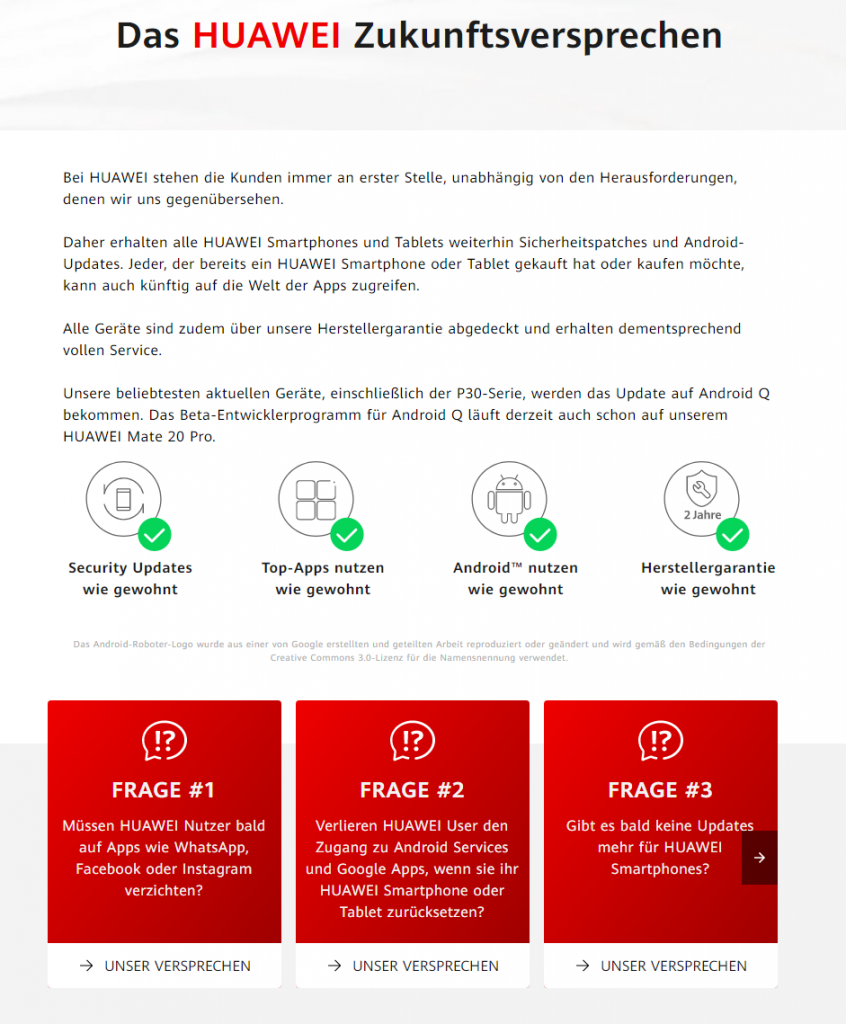
A similar website exists in English, managed by Huawei UK, with its own domain, but using Huawei’s UK website. This website can be found at “huaweianswers.com”, and was registered, according to, once again, Whois, the 18th of June 2019, a few days after the German domain.
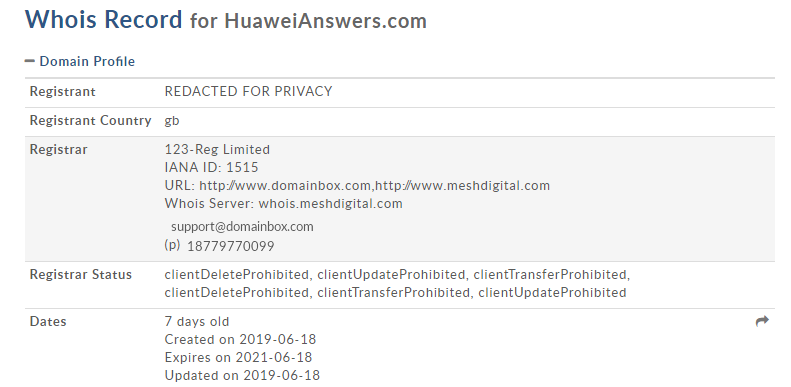
[Update] After writing this article, and while we were publishing it on our website, we found out that “huaweianswers.com” now automatically redirects to the Huawei website of the country of each visitor, with the answers in question available in the national language(s). In our case, the link redirects to the Belgian site with the information in Dutch, although the language can be switched to French, thankfully.
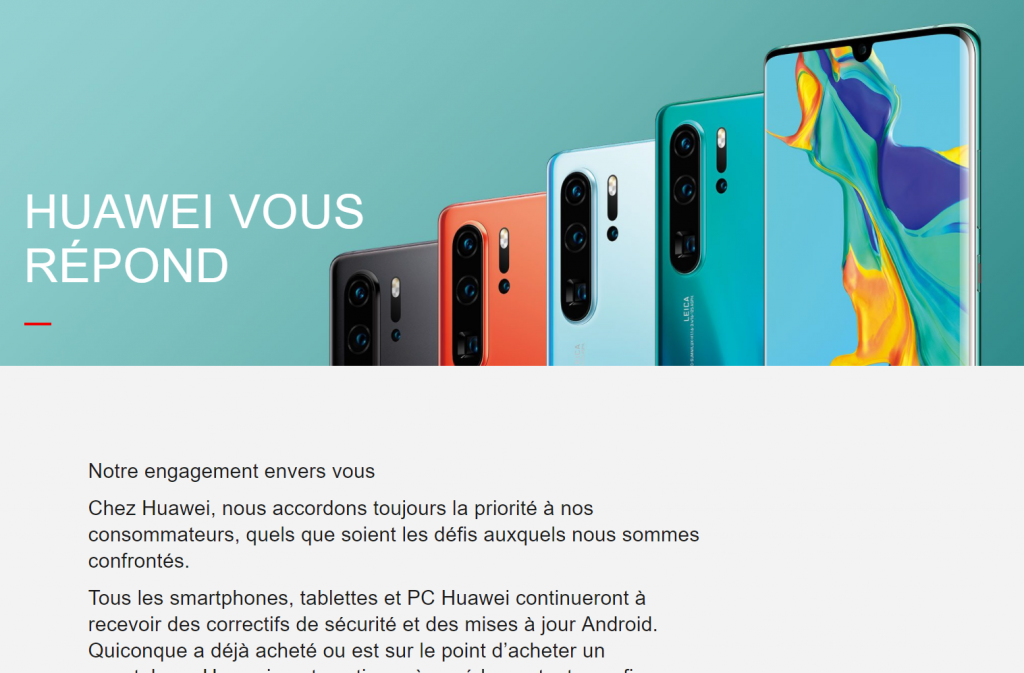
This section of Huawei’s UK website contains exactly the same information as the German site, but this time published in English.
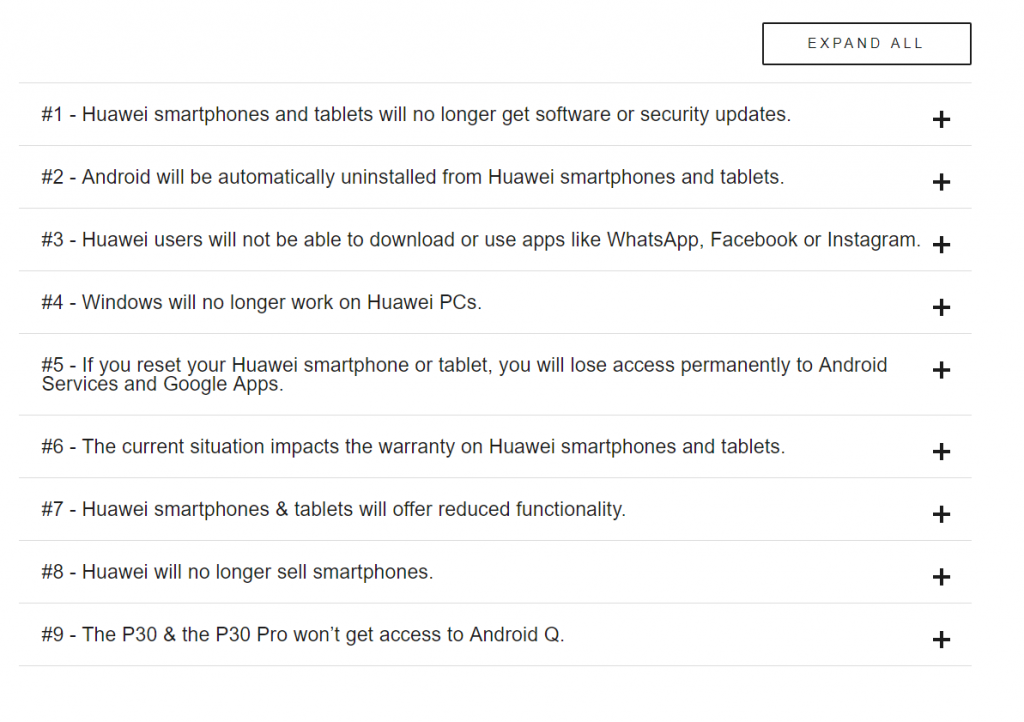
Some of the answers cover future security and OS updates, mentioning Huawei will continue to provide these, or the fact that apps like “WhatsApp, Facebook or Instagram” will continue working as normal and can be downloaded normally, which shows the “real worries” of the average user. Huawei also confirms their devices using Microsoft products (Windows 10 on the MateBook line-up, the Microsoft translate app on some phones) will continue receiving software updates from the US company and reiterates that existing Huawei devices will not be affected by the current situation. Huawei also repeats once again that after-sales service will continue being provided, “in accordance with the existing warranty policy”.
The list of worries answered finishes with a confirmation of which devices will be getting Android Q/EMUI10.0, with Huawei currently listing 17 different models. We covered this information in a different article.
This increased PR campaign shows Huawei desires to put an end to some rumours and disinformation that currently circulates around, and, most likely, try to reduce or stop the decrease in sales of their products, which, according to various reports and analysts, have fallen by 20 to 40% since the beginning of the US sanctions. The company is also supposedly getting ready to face a decline of shipments of anywhere between 20 to 60% internationally, representing up to 60 million devices less compared to 2018’s shipments, which passed the 200 million mark. It is also important to point out that, despite US sanctions and the negative press surrounding the Chinese manufacturer, Huawei proudly announced having shipped 100 million devices since the beginning of this year.
It is still too early to tell the effect of the US sanctions on Huawei’s phone sales, as not only these are not sold in the United States, but many other factors have to be taken into account, such as the increasing decline in smartphone sales in some mature markets such as Europe. We’ll be covering these factors in a more detailed article later on.
More on this subject:
- Huawei confirms at least 17 devices will get EMUI10.0/Android Q (27/06/2019)
- Huawei submits trademark applications in the European Union for HongMeng OS & ARK Compiler, confirming Android’s replacement (24/05/2019)
- Huawei claims close to 500 million daily active EMUI users (27/04/2019)
- Huawei releases limited-series Mate 20 Pro to celebrate 200 million devices sold (5/03/2019)
